Hello everybody.
First of all, my apologies for the tour IEMs being stuck here for so long. I started to work in a very demanding job when I received the pack, although this can't be an excuse of the huge delay. Thank you all for being so patient and comprehensive.
1.
Sensitivity, SPL calibration.
I first tried with the tips which came plugged on the IEM, stock frosted tri-flange small ER38-15SM. In order to get a proper seal, had to insert the tip so deep that it was touching and bending the fabric mesh inside the coupler.
So changed to stock frosted tri-flange large ER38-15L (ER38-15SM temporal measurement is included though), and tried to restore the mesh shape.
I don't know which method you use to set 94dB SPL at 500Hz; I'm going to tell mine, because found some differences relative to official sensitivity, and you might find defects in my method.
To calibrate SPL, I use a coupler attached to the SPL meter, because I guess it's the most accurate way to measure SPL with IEM. The mic included in the SPL meter is a free-field one, but it shouldn't show significant differences compared to a pressure-field mic at 1kHz or 500Hz.
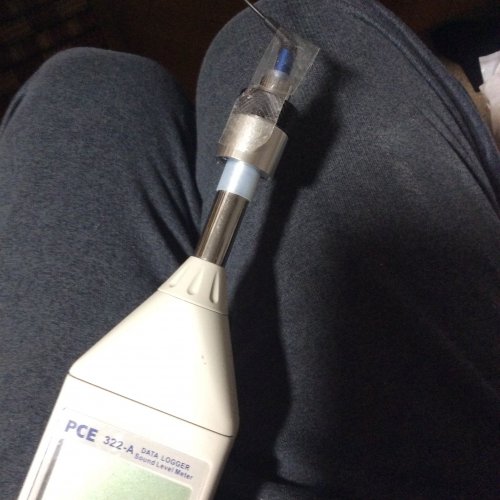
Sensitivity:
Official: 96dB SPL @ 100mV, 1kHz.
Mine:
Audacity to generate sine signals (100%, 0dBFS). SPL meter: PCE 322-A, calibrated with PCE-SC41 calibrator, class 2. Tip: ER38-15L.
Left/Right: 94.7/94.65 dB SPL @ 100mV, 1kHz (114.7/114.65 dB/V, 96.46/96.41 dB/mW).
As you can see, there is more than 1dB discrepancy with official data (which uses to be very accurate from etymotic).
The difference between various insertion depths is around 0.3dB (@ 100mV).
I also own a different calibrator, Chinese ND9A, also class 2, but I always thought it was worse accurate, based in previous measurements. It gives around 0.8dB difference. Using this as reference, measured sensitivity would be much near to official specification. So I might was wrong, and this Chinese calibrator is better calibrated than my more expensive one (also made in China, probably). Anyways, these class 2 calibrators have a tolerance of +-0.5dB (or even +-0.8dB). So guess that using etymotic official sensitivity specification to calibrate SPL by voltage shouldn't be a worse approach.
2.
Impedance and phase
Left:
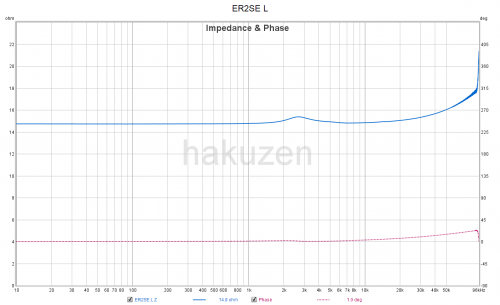
Right:

These are drivers impedances, discounting stock cable resistance (besides of the resistance of the leads used when measuring). Add ~630mΩ offset to get impedance of drivers + stock cable.
There is near 0.1Ω difference between left and right. Measured imbalance was around 0.05dB between sides (@94dB,1kHz, as seen above, in sensitivity measurements).
3.
Frequency response
94dB SPL @ 500Hz. 24bits, 192kHz. 2*4M sine sweeps.
Using my SPL calibration gear and method, average insertion depth, set 106dB SPL @ 500Hz (REW sine level was -12dBFS), 439mV (right driver).
Tip: ER38-15L. Right.
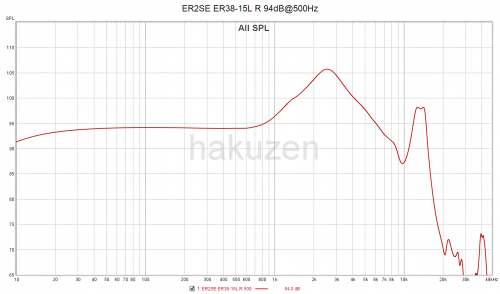
The difference (highs resonances) when using different tips is huge, as expected.
Next measurements are temporal, not calibrated to 94dB @ 500Hz (I'll explain in next post why I haven't got calibrated measurements using different tips yet). Added to get an idea of tips incidence.
Tip: ER38-15L. Left (not calibrated)

Tip: ER38-15SM. Right. The tip was touching -and bending- the mesh of the coupler, so result is weird. Not calibrated.
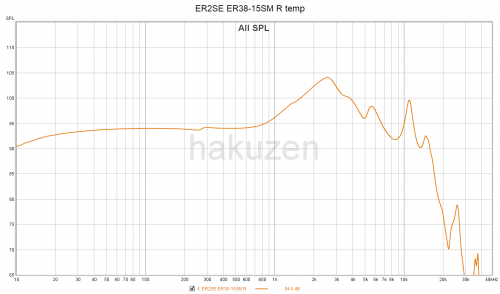
Tip: Chinese foam T100. Right. Not calibrated.

3.
Impulse response
Tip: ER38-15L. Right.




























 After that, the plan was
After that, the plan was 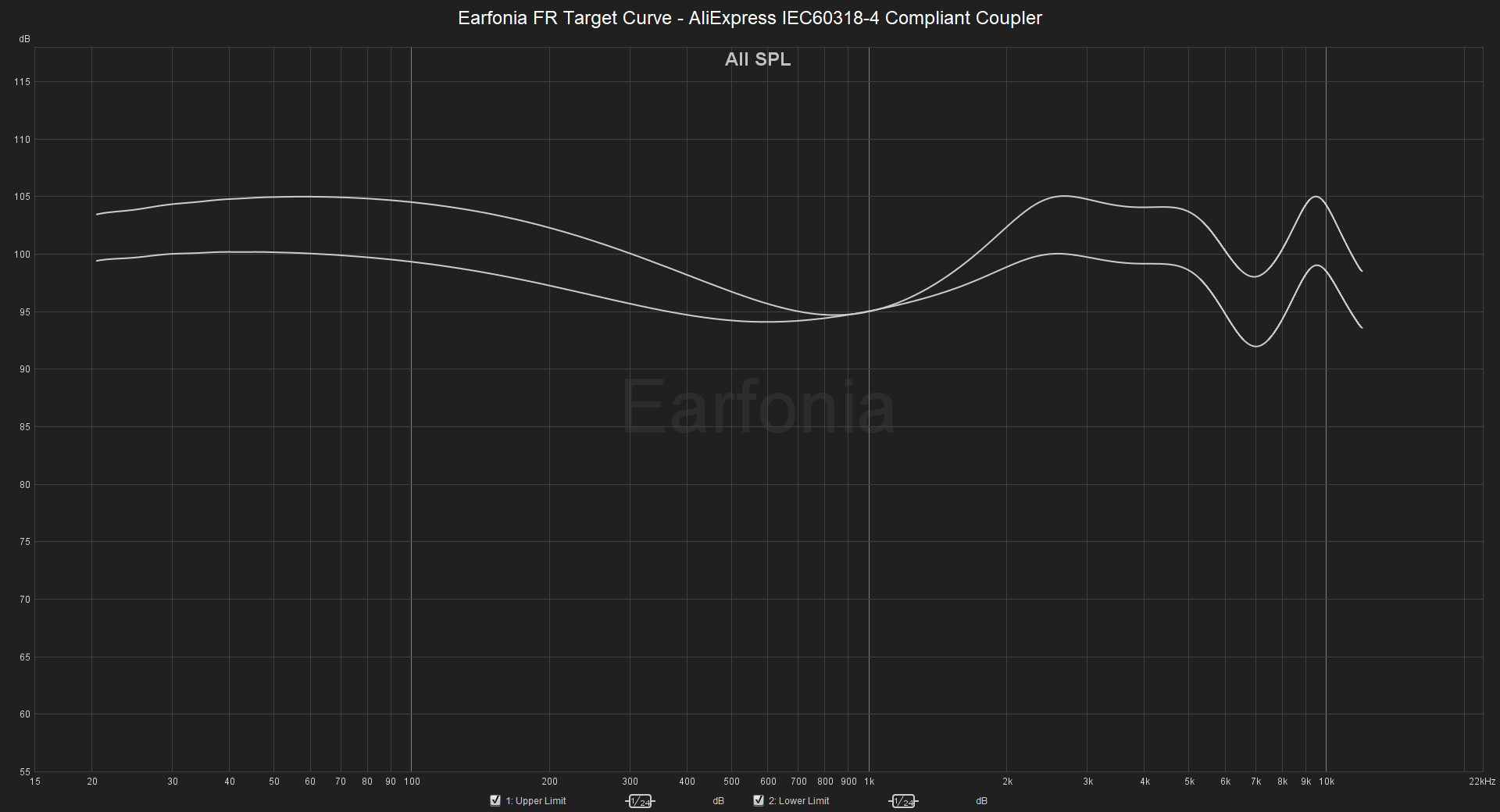










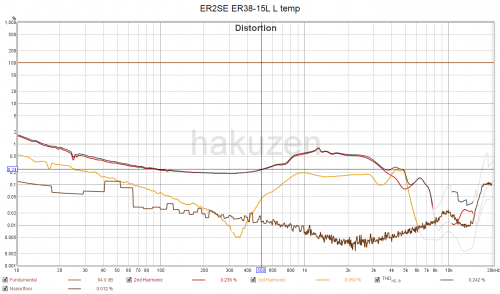




 . So I just stay away now
. So I just stay away now

